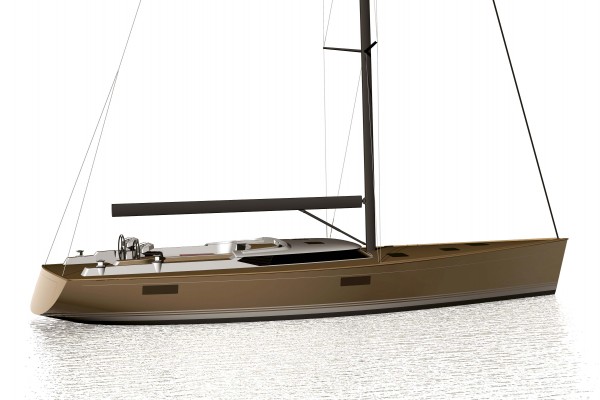These two new 67-footers raise the question of what size of boat is manageable without a crew
Leading luxury yacht builder Oyster Marine and Dutch yard Contest have both announced new 67-footers with a performance twist. The Oyster 675 will join last year’s 745 to form a new Coupé range for the UK builder. Meanwhile, Contest has commissioned Judel/Vrolijk for the first time to design its new 67CS. This is a size on the increase for owners who like to get places quickly and engage in the odd race, and may need crew to help manage the boat.
But what size is now manageable without a crew? The Oyster 625, the Contest 62CS and the Hallberg-Rassy 64 all launched four to five years ago. The Oyster was designed as a crossover, a boat for owners who still wanted to sail themselves, but also offered the option of a forepeak crew cabin. The Rassy was very much intended as a couples’ boat. Have things moved on again?
“Around 60ft is the biggest size that owners want to sail alone with their family and friends and 80ft is the smallest to socially separate crew,” Oyster CEO David Tydeman says. “Between the two sizes, we found it is a different type of owner and sailing.” He explains that it is one that means cohabiting with crew. Both the 745 and 675 are four-cabin models.
Arjen Conijn, managing director of Contest, sees his company’s new 67-footer as a hybrid solution. “It is possible to sail just with the family or with a crew,” he declares. The difference is that her size provides the opportunity “to bring a crew aboard one day”.
Conijn feels the development of equipment such as thrusters and electric winches has made this size practical without crew. “Five years ago our 62 launched and proved it was manageable and now it will be with this [67],” he says. “Our 72 is the starting point for permanent crew.”
That said, the 67CS has a forepeak crew cabin on each of its interior layout options. In the October issue we tested the Jeanneau 64. She has been well designed to allow a couple to manage her easily at sea, but we still doubt whether many owners will run her without paid help.
Modern yachts of this size can certainly be sailed by two, but the maintenance of the yacht, including its systems and engineering, will often require a professional hand.
Oyster Coupé
Oyster has now divided its eight-boat range into three distinct labels: ‘With the Family’ for the Oyster 475 to 625; ‘With the Chauffeur’ for their 80ft-plus yachts; and ‘The Coupés’ for the new 675 and 745.
Modern hull forms and rig options help the latter offer “five to ten per cent more performance without challenging the ethos of the brand,” CEO David Tydeman believes. Oyster found that owners of this size range tended to favour rig set-ups to help them get the most speed out of the boat, including carbon masts and fully battened mains.
The 675 has a stretched coachroof, which Oyster says gives ‘a sense of power and purpose in a manner akin to the more tasteful of performance road cars’. A comparatively tall rig offers performance, twin rudders will help tame the powerful sailplan and a swinging centreboard is offered. Further options include foredeck tender stowage or an extended transom to incorporate a dinghy garage, plus enclosed or passageway galley formats.
The 675 and 745 (three of which have been sold already) are planned for launch in 2016. www.oystermarine.com
Quite a Contest!
The move to designers Judel/Vrolijk is a bold statement by Contest Yachts. Just as a GTi badge on a car suggests increased performance, it’s fair to assume a yacht drawn by this firm will be no slouch.
Contest wanted to find a naval architect to establish the sort of long-term relationship it enjoyed with Georg Nissen, one that could produce continuity. Over the past ten years, Contest has pushed for more performance while trying to maintain its trademark quality and comfort. “Comfort and quality remain king,” Arjen Conijn says, “but wherever we can win performance without losing our core focus we will do it.”
The hull lines of the 67CS have been optimised for moderate displacement and performance. She has reasonably flat sections aft and a hint of a chine to the topsides for offwind stability, plus a sharp forefoot for upwind work. The 67CS also has a generous rig that offers many sail combinations.
Her low-profile coachroof is in keeping with the rest of Contest’s 42-72ft range. Wetzel Brown Partners have again handled styling in the interior– four layouts are offered, including the choice of forward or aft owner’s cabin.
The 67CS is planned for launch in 2016.
This is an extract from a feature in the November 2014 issue of Yachting World





